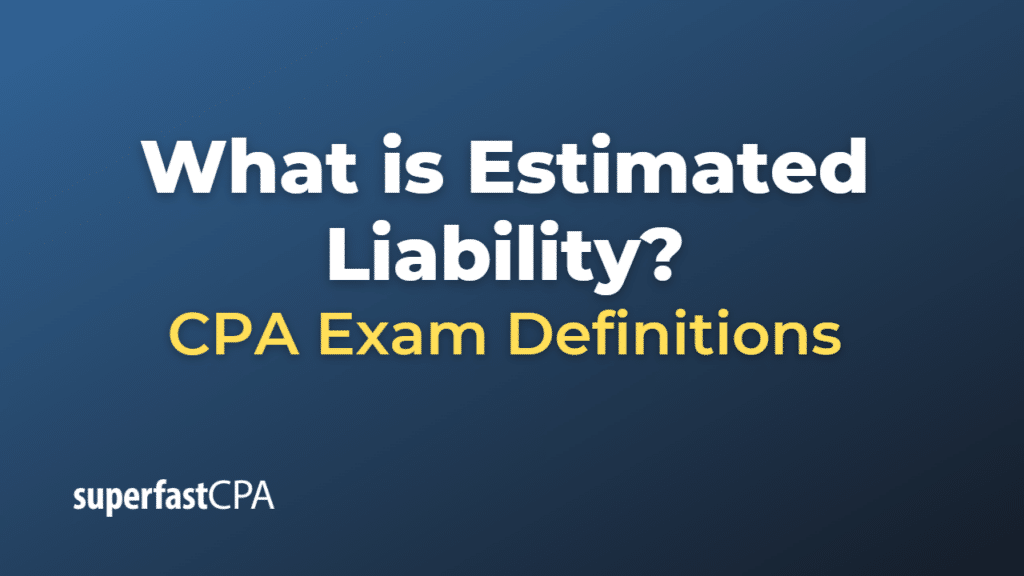Estimated Liability
“Estimated liability” refers to a potential financial obligation or debt that a company expects to owe in the future, but the exact amount is not yet known. These are often recorded as accrued expenses on a company’s balance sheet.
Liabilities might be estimated for a number of reasons. Perhaps the exact cost is not yet known, the event triggering the liability has not yet occurred, or the amount varies based on future events. Despite the uncertainty, businesses need to account for these future liabilities to maintain accurate and transparent financial records.
Here are a few examples of estimated liabilities:
- Warranty Liability: If a company sells products with a warranty, it will likely have to pay for repairs, replacements, or refunds in the future. The company must estimate this future cost based on past experience and set aside funds to cover it.
- Income Tax Liability: A company usually needs to estimate its income tax liability before the exact amount is determined by a tax return.
- Lawsuit Liability: If a company is involved in a legal dispute, they may estimate the potential liability from the lawsuit based on legal advice and previous similar cases.
- Bonuses or Commissions: Companies often estimate the cost of year-end bonuses or sales commissions that have been earned but not yet paid.
Accounting standards typically require these estimated liabilities to be updated regularly as new information becomes available. This way, the company’s financial statements accurately reflect its current financial position.
Example of Estimated Liability
Let’s use an example to illustrate the concept of estimated liability:
Imagine a company called “ElectroGadgets” that manufactures and sells electronic goods like smartphones and laptops. They offer a one-year warranty on all their products, promising to repair or replace any defective items within that period.
Based on their sales and historical data about warranty claims, ElectroGadgets estimates that 5% of the products they sell will be returned under warranty. Each returned item costs them an average of $50 to repair or replace.
In a particular year, ElectroGadgets sells 10,000 units. Based on their 5% return rate, they anticipate that 500 products will be returned for warranty repairs or replacements. At a cost of $50 per item, they can expect to incur $25,000 ($50 * 500) in warranty expenses.
This $25,000 is an estimated liability. ElectroGadgets would record this amount on their balance sheet at the end of the year as an accrued expense, reflecting the anticipated future cash outflow related to warranty claims. Throughout the next year, as warranty claims come in and are addressed, they would decrease this liability and record the corresponding expense.
Keep in mind this is a simplified example. In actual business situations, the calculation of estimated liabilities can be more complex and involve more variables. Additionally, these estimates would be reviewed and updated regularly to maintain accurate financial reporting.













